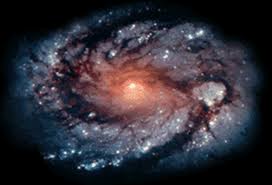13. Technical Considerations: Conclusions
(From the Journal of the British Interplanetary Society 1997, 50, 93-102. Michael N. Mautner)The above considerations suggest that a single technological civilisation can seed the galaxy. Similarly, one past panbiotic civilisation could have seeded the galaxy, accounting for the rapid emergence of life on Earth and possibly on Mars [2, 3, 26]. However, if ours is the first technological civilisation, the potential to seed the galaxy demonstrates the significance of directed panspermia that we can accomplish. Furthermore, by extrapolation, the material resources of 1E11 solar systems in one galaxy may be sufficient to seed all the 1E11 galaxies.
Of course these are speculative long-term prospects. However, even a few comet-based missions in the nearer future, using a small fraction of the cometís material, is sufficient to target one star-forming cloud for a major biological expansion.
Please note: numbers in square brackets refer to the references that you will find under "resources"

